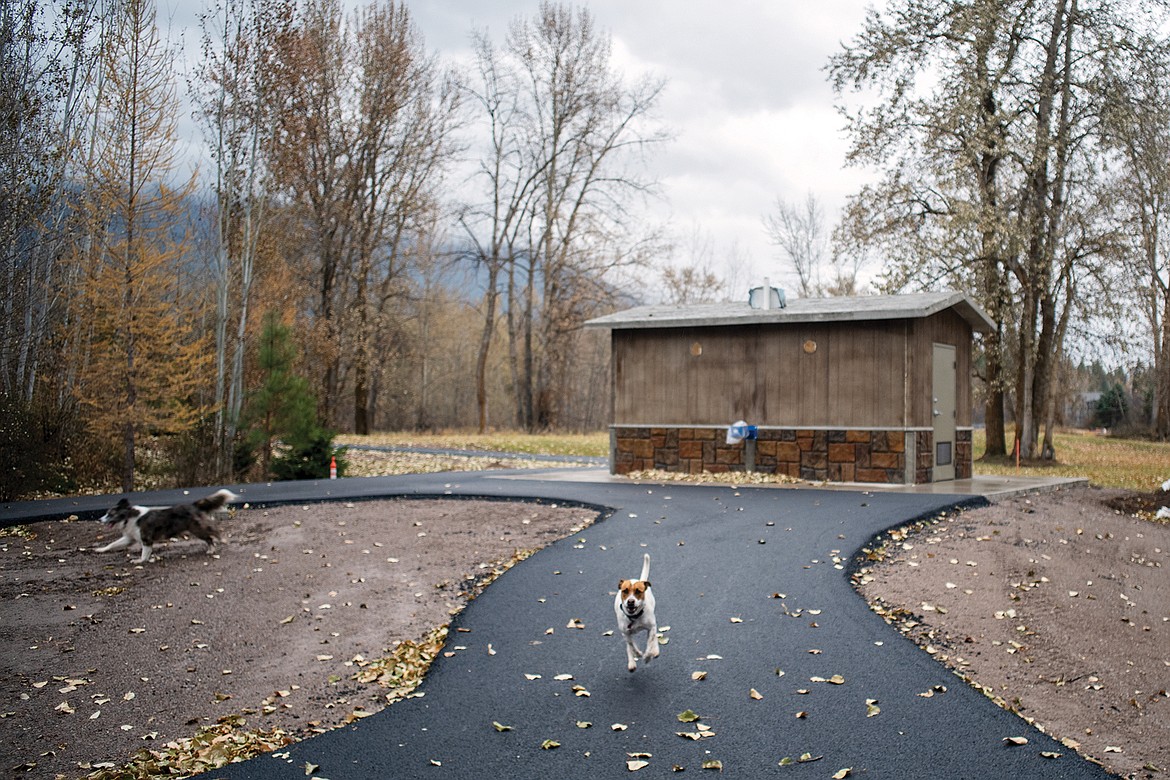Bike and pedestrian paths finished before snow flies
Crews were able to get a couple of local projects done before the snow flew late last week.
A new bike/pedestrian path done by Sandry Construction is nearly complete along Highway 2 from the Flathead River Bridge to Columbia Heights and a new path and bathroom have been put in at River’s Edge Park.
Crews were able to get the asphalt down last week on the $378,000 project. The Highway 2 path was funded through the Federal Lands Access Program.
The initial plans were to have the bike path go to the House of Mystery, just outside the Bad Rock Canyon, but there wasn’t enough funding.
The path is another piece in the bike path puzzle to connect Columbia Falls to West Glacier. The last link really is a path through the Bad Rock Canyon, but that won’t happen until the road is improved through the canyon, a project that is likely years away.
Closer to town, Knife River finished a paved path and improved others in River’s Edge Park in Columbia Falls.
The paved portion runs from the parking lot to just behind a slough along the fishing pond. The idea is to have wheelchair accessibility to the fish pond and the open space just behind the pond, where folks hold weddings, said Columbia Falls public works director Tyler Bradshaw.
The rest is gravel. The boardwalk near the lower slough has also been repaired.
The new bathroom should be finished in the next two or three weeks and will have power, which means it should be open during the day, but will likely be locked at night during the winter, Bradshaw noted.
The bathroom is not a pit toilet — it has running water.
Both sides are unisex.
In the longer term, the city hopes to put a pier out into the fish pond. There’s also concern about the river eroding away several feet of the park each spring during high water.
The city can’t simply put rip-rap along the bank on its own. It requires a federal permit from the Army Corps of Engineers, called a 404 permit.
That permit requires a thorough analysis on the hydrodynamics of the river and whether rip-rap would impact adjacent landowners and other structures nearby. There’s no guarantee the city would get one, even with the study.

